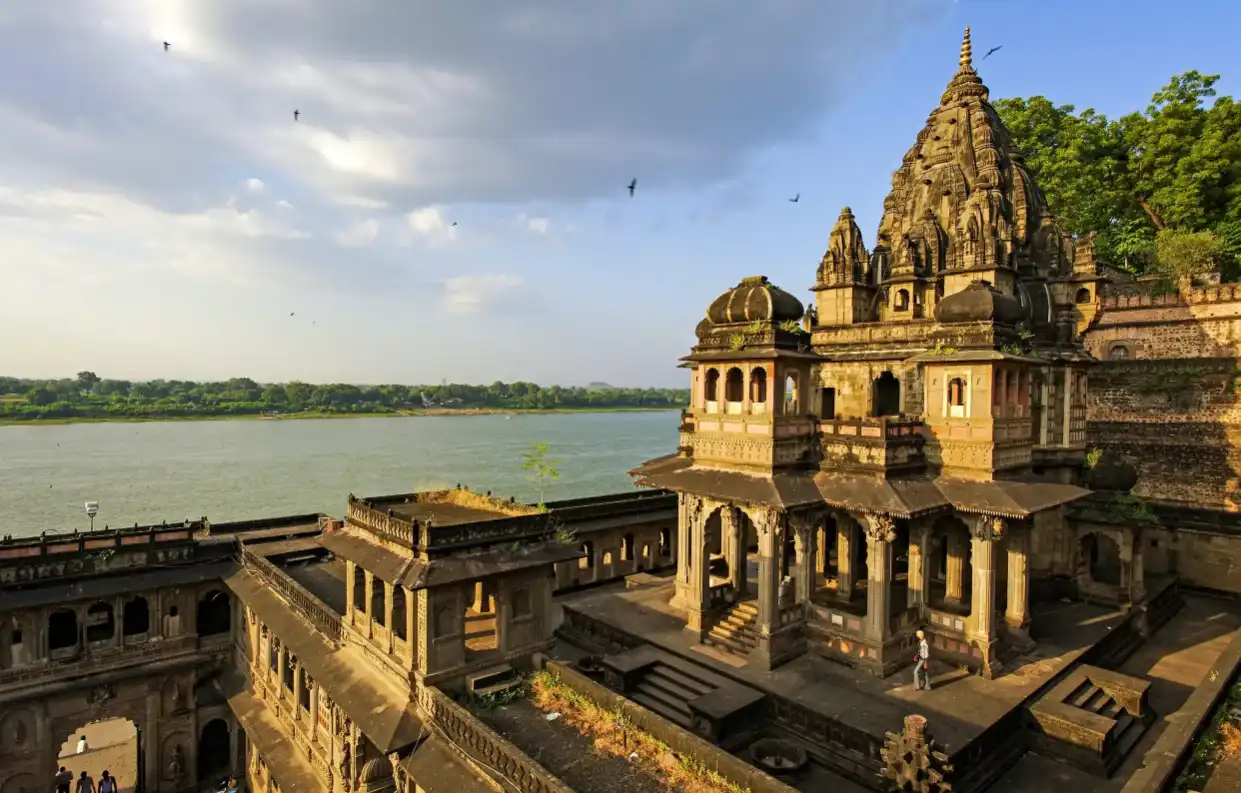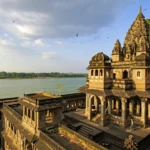History of Khajuraho Mandir – The Glorious Legacy of Chandela Art and Devotion
The Khajuraho Mandir complex, nestled in the Chhatarpur district of Madhya Pradesh, is one of India’s most iconic and enigmatic heritage sites. Revered for its unmatched stone carvings and deeply symbolic art, the temples of Khajuraho tell the story of a flourishing kingdom, spiritual evolution, and the artistic zenith of medieval India.
Origins Under the Chandela Dynasty
The Chandela rulers, who reigned from the 9th to the 13th century, were the masterminds behind the creation of the Khajuraho temples. Their kingdom flourished in the Bundelkhand region, and they were devout patrons of art, culture, and religion.
Construction of the temples began around 950 AD and continued for over a century. Under kings like Yashovarman and Dhanga, these temples were erected with the vision of expressing both divine devotion and the human journey through life. The Chandelas built approximately 85 temples, though only about 20 have survived the ravages of time.
Spiritual and Symbolic Architecture
The temples were designed with a unique architectural style known as Nagara style, characterized by tall, curving spires and intricately sculpted exteriors. The Khajuraho complex comprises temples devoted to Hindu deities like Shiva, Vishnu, and Surya, along with several Jain temples, highlighting the region’s spiritual diversity.
What sets these temples apart is the extraordinary sculptural work—figures that range from deities and musicians to scenes of daily life and mythological stories. The most talked-about carvings are the erotic sculptures, which represent only a small portion of the overall art but are symbolic of Tantric traditions and the philosophy of cosmic unity through love and creation.
Decline and Rediscovery
By the late 13th century, the power of the Chandelas diminished, and the Delhi Sultanate began expanding into central India. With the political shift came the decline of Khajuraho, as invasions and instability forced people to abandon the temple city. Over time, the temples were swallowed by the forests and forgotten by the outside world.
In 1838, British surveyor T.S. Burt rediscovered Khajuraho while exploring the region. He was amazed by the detailed sculptures and temple structures hidden in the jungle. This marked the beginning of Khajuraho’s revival as a historical and tourist site. Since then, the Archaeological Survey of India (ASI) has taken extensive steps to preserve the temples and promote them globally.
In 1986, UNESCO recognized the Khajuraho Group of Monuments as a World Heritage Site, cementing its status as a priceless cultural treasure.
Artistic and Cultural Significance
Khajuraho stands as a pinnacle of Indian temple art and symbolism. Its carvings reflect the four goals of human life according to Hindu philosophy: Dharma (duty), Artha (prosperity), Kama (desire), and Moksha (liberation). The erotic motifs, often misunderstood, are not mere expressions of sensuality but deep allegories of life’s cycles and the union of body and spirit.
The precision of the sculptures, the harmony of proportions, and the narrative power of stone set Khajuraho apart from other temple complexes in India.
Timeless Legacy
Today, the Khajuraho temples are a symbol of India’s cultural openness, spiritual richness, and artistic genius. Tourists from across the globe come to admire not just the visual beauty of these monuments but also the philosophy and stories embedded in every inch of carved stone.
Khajuraho has also become a center for cultural events like the Khajuraho Dance Festival, which brings together India’s classical dance forms against the stunning backdrop of ancient temples.
Explore Khajuraho with Antriksh Travel
Step into a world where stone speaks of devotion and love. At Antriksh Travel, we offer curated Khajuraho heritage tours and temple exploration packages that include expert guides, comfortable stays, and deep cultural experiences.Explore Khajuraho Tour Packages




